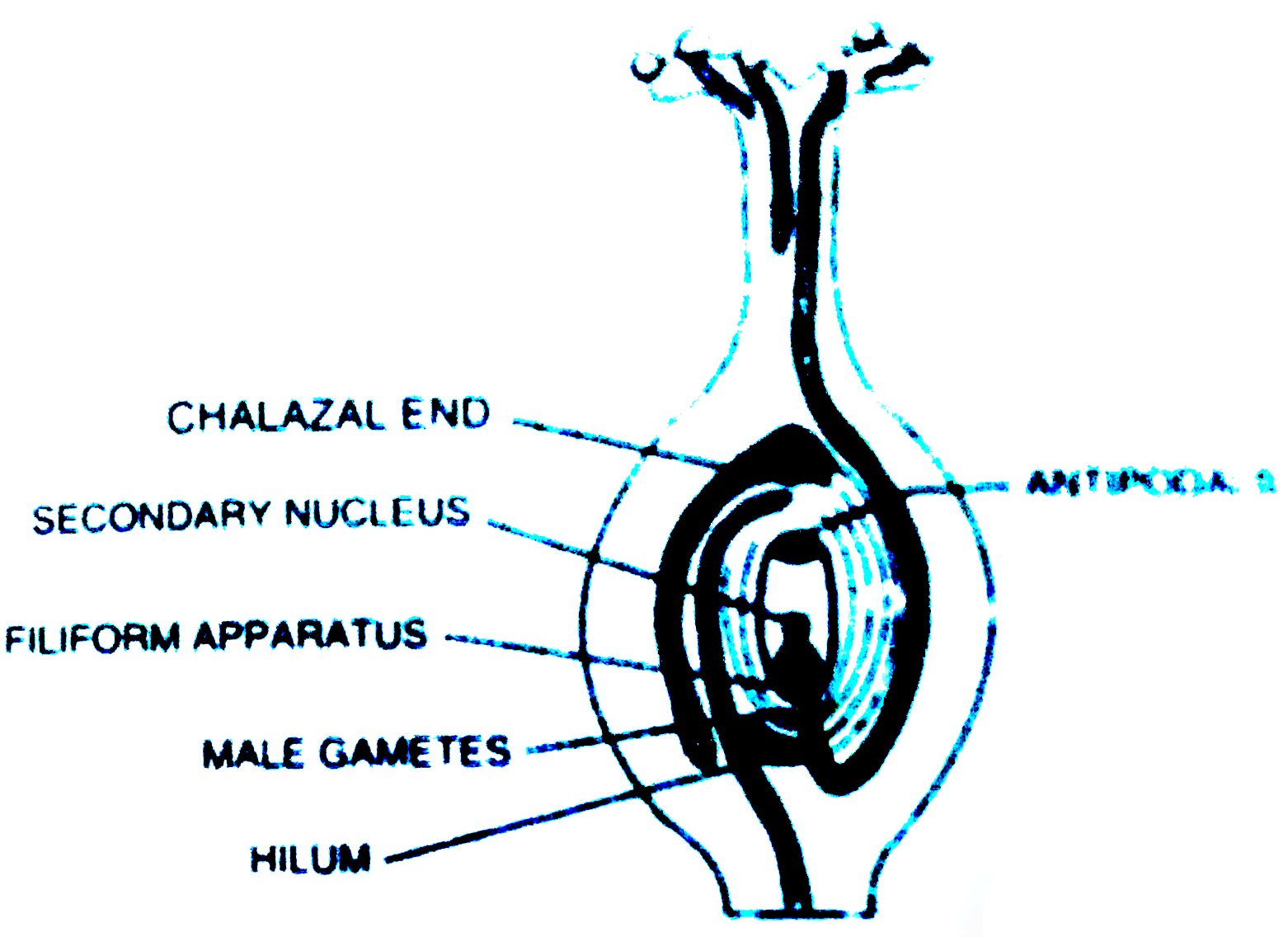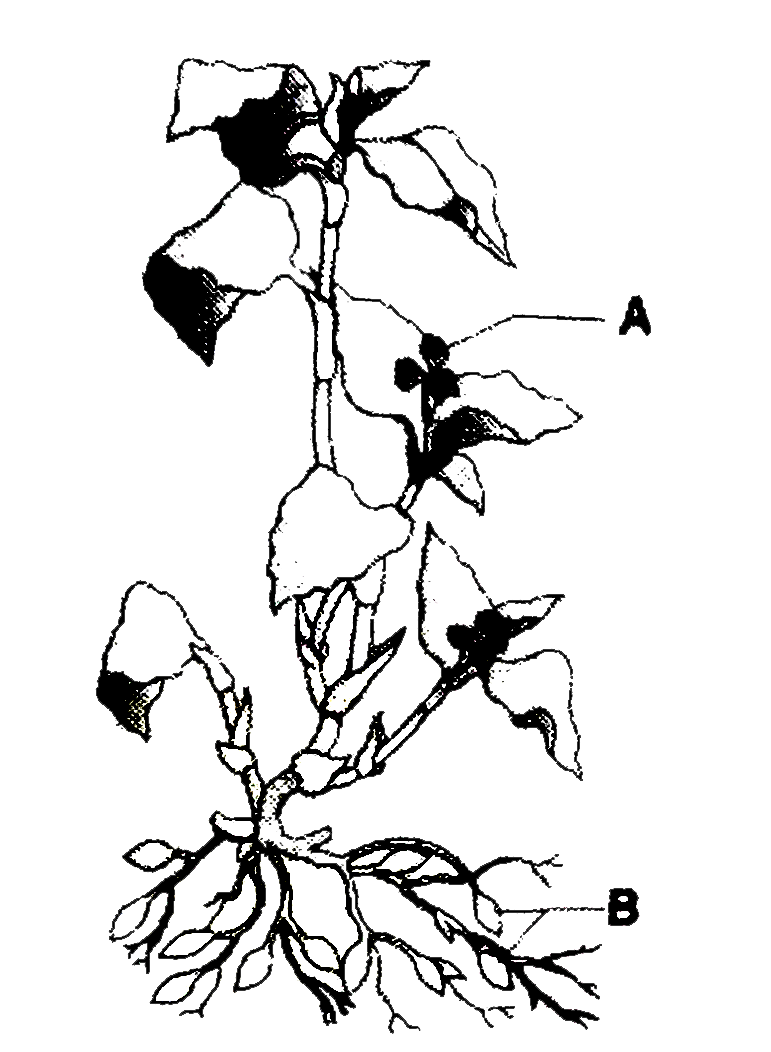Draw a longitudinal section of a post-pollinated pistil showing entry of pollen tube into a mature embryo-sac. Label filiform apparatus, chalazal end, hilum, antipodals male gametes and secondary nucleus .
 Solution in Bengali
Solution in Bengali
Longitudinal section of a post pollinated pistil.
Topper's Solved these Questions
- REPRODUCTIONBOOK - TRUEMAN BIOLOGYCHAPTER - REPRODUCTIONEXERCISE - SECTION-D
27 Videos
- REPRODUCTIONBOOK - TRUEMAN BIOLOGYCHAPTER - REPRODUCTIONEXERCISE - SECTION-B
39 Videos
- Protista BOOK - TRUEMAN BIOLOGYCHAPTER - Protista EXERCISE - ASSERTION AND REASON
6 Videos
- Reproduction In OrganismsBOOK - TRUEMAN BIOLOGYCHAPTER - Reproduction In OrganismsEXERCISE - MULTIPLE CHOICE QUESTION
131 Videos
Similar Questions
A woman has conceived and implantation has occurred in her uterus. Explain the sequence of changes upto parturition which take place within her body.
View SolutionIndentify the type of flower shown in A and B. Which out of the two will produce an assured seed set ?

View Solution[A] : Contractile vacuoles in protists show systole and diastole .
[R] : Contractile vacuoles help in osmoregulation .
View SolutionRegeneration was first discovered in Hydra by
View SolutionDraw a longitudinal section of a post-pollinated pistil showing entry of Pollen, tube into a mature embryo-sac. Label filiform apparatus, chalazal end, Hilium, antipodals, male gametes and secondary nucleus.
View Solution(a) Draw an L.S. of pistil showing pollen tube entering into the embryo sac. Label the following : (i) Nucellus (ii) Antipodals (iii) Synergids (iv) Micropyle (b) Write the functions of the following : (i) Synergids (ii) Micropyle
View SolutionDraw a longitudinal section of a post-pollinated pistil showing entry of pollen tube into a mature embryo-sac. Label filiform apparatus, chalazal end, hilum, antipodals male gametes and secondary nucleus .
View SolutionDraw a labelled diagram of the longitudinal section of a pistil showing pollen germination .
View Solution(a) Draw a labelled diagarm of a matures embryo sac . (b) Why does a pollen grain possess two male gametes ? Explain.
View SolutionDraw a longitudinal section of the pistil from a flowering plant, where pollination has occurred. Label the following: (a) Stigma showing germinating pollen grains (b) Style (c) Pollen tube reaching the micropyle of the ovule (d) Embryo sac (e) Components of the egg apparatus
View SolutionDraw labelled diagram of the longitudinal section of a pistil showing pollen germination.
View SolutionDraw a longitudinal section of a post-pollinated pistil showing entry of Pollen, tube into a mature embryo-sac. Label filiform apparatus, chalazal end, Hilium, antipodals, male gametes and secondary nucleus.
View Solution(a) Draw an L.S. of pistil showing pollen tube entering into the embryo sac. Label the following :
(i) Nucellus (ii) Antipodals
(iii) Synergids (iv) Micropyle
(b) Write the functions of the following :
(i) Synergids (ii) Micropyle
View SolutionDraw a labelled diagram of a mature embryo sac. Why does a pollen grain possesses two male gametes? Explain.
View SolutionDraw a longitudinal section of the pistil from a flowering plant, where pollination has occurred. Label the following: (a) Stigma showing germinating pollen grains (b) Style (c) Pollen tube reaching the micropyle of the ovule (d) Embryo sac (e) Components of the egg apparatus
View Solution
